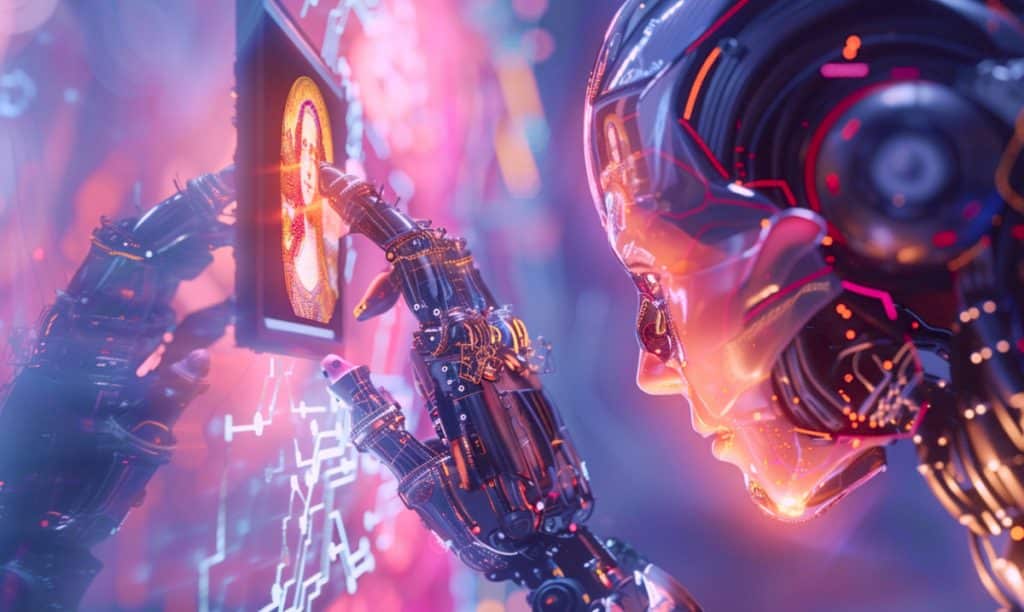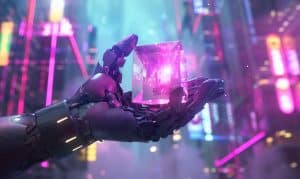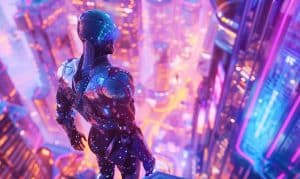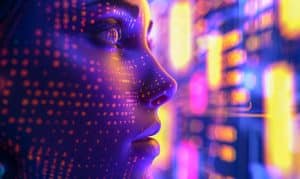AI in NFT


In Brief
This article explores how AI, NFTs, and generative art reshape digital ownership and creativity. It discusses AI-generated NFTs’ impact on gaming, blockchain’s role in verifying digital assets, and ethical challenges like AI biases. It emphasizes the transformative potential of integrating AI and NFTs in digital asset management and creative expression.
While AI keeps expanding the capabilities of computers, NFTs have already completely changed provenance and ownership in the digital space. Generative art is one of the most fascinating areas where they come together. Digital artwork that is both distinctive and captivating may be produced by certain algorithms or AI NFT creators, particularly those that are based on generative-adversarial networks. AI is also used by developers and artists to produce various and frequently unique artworks that serve as the foundation for NFTs. All of them are AI generated NFTs or just digital work of art, showcasing not only the creativity of new technologies but also an element of unpredictability.

NFTs powered by artificial intelligence have also been effectively incorporated into the gaming industry as character cards from video games are now available for collectors, and each card has a set of its special qualities. Another way to describe it is that AI-generated NFTs provide unexpected aspects to the gameplay, allowing characters to change and develop in response to player choices and commitment. This raises the value of virtual goods, gives players additional options, and generally improves the overall interest and immersion of the game.
According to the Metaverse Post, the blockchain technology which drives NFT is transparent and decentralized, making it the perfect foundation for verifying the origin and legitimacy of digital assets. How does it work? By examining the distinct qualities and patterns of digital information, artificial intelligence systems may be used to authenticate NFT. For buyers, this is a fantastic method to maintain their collection’s protection and guarantee the legitimacy of the assets.
The combination of artificial intelligence with digital art, however, doesn’t exist without its difficulties and ethical implications. Biases in AI algorithms and the effects of blockchain transactions on the environment are two of the major disadvantages. To maintain the sustainable future and moral application of AI art NFTs, it is crucial to find a balance between innovation and responsible use. The integration of artificial intelligence and NFT represents a revolutionary synergy that is changing the landscape of digital assets and as the technology continues to evolve, it is important to research these technologies even more precisely.
Disclaimer
In line with the Trust Project guidelines, please note that the information provided on this page is not intended to be and should not be interpreted as legal, tax, investment, financial, or any other form of advice. It is important to only invest what you can afford to lose and to seek independent financial advice if you have any doubts. For further information, we suggest referring to the terms and conditions as well as the help and support pages provided by the issuer or advertiser. MetaversePost is committed to accurate, unbiased reporting, but market conditions are subject to change without notice.About The Author
Viktoriia is a marketing researcher and copywriter with a background in international relations. Her professional portfolio includes the writing of research papers focused on the import and export of products to Europe and Asia. Proficiency in the Chinese language and the time she has spent in China have extended her capabilities to master not only European markets but also those in China and Singapore. While currently living in Italy, Viktoriia continues to deepen her knowledge and skills in marketing and copywriting. Her experience allows her to perform analytical work and create texts on a diverse range of topics, ensuring accessibility to a broad audience.
More articles

Viktoriia is a marketing researcher and copywriter with a background in international relations. Her professional portfolio includes the writing of research papers focused on the import and export of products to Europe and Asia. Proficiency in the Chinese language and the time she has spent in China have extended her capabilities to master not only European markets but also those in China and Singapore. While currently living in Italy, Viktoriia continues to deepen her knowledge and skills in marketing and copywriting. Her experience allows her to perform analytical work and create texts on a diverse range of topics, ensuring accessibility to a broad audience.























































